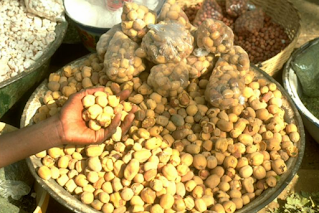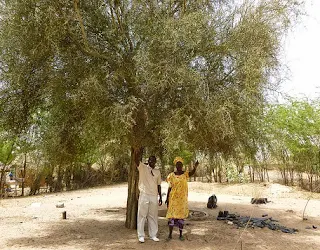Africa Can Feed Africa
The African desert date is one example of Africa’s naturally drought-resistant trees across the driest parts of Africa.

|
| African desert dates are drought-tolerant plants providing food in Africa's drought-prone countries. |
In 2011, East Africa was in the midst of its the worst drought in more than 60 years, with as many as 10 million people at risk. The drought led to crop failures leading to a major food crisis. In the first seven months of 2014, more than 87,000 people arrived in Italy by sea, mainly from Eritrea and Syria and as the refugee crisis looms more people leave their homes to escape conflict, drought, and poverty.
Africa can feed Africa. The desert date tree is considered valuable in dry and drought regions because it produces fruit even during droughts due to its long taproot. The desert date, a native African evergreen tree is known by many names; soapberry tree, Egyptian balsam, Indian hingota, thorn tree, Dattier du desert, and Heglig just to name a few. The slow-growing desert date fruits turn from green to yellow when ripe.
The desert date supplies many people with nourishment and folk medicine when food sources and medicines are scarce. The fruit pulp is bitter but edible. The desert date seed is rich in oil an important source of fatty acids and carbohydrates.

|
|
Ethiopian pastoralist children walk in the arid lands of Dire Dawa. |
Traditionally, in some regions of Africa, food production is at a hand to mouth level. This is due to many factors beyond the control of the population. African desert dates are drought-tolerant plants providing food in Africa's drought-prone countries. Greater focus is needed on studies for the cultivation of the desert date throughout desert climates. Desert drylands, arid, semi-arid, and sub-humid areas with seasonal, often unpredictable rains account for about 41 percent of the world’s land mass. The desert date has the potential to provide resources that could help broaden and secure Africa's food supply.
The world is facing a major refugee crisis. Millions of people remain displaced because of natural disasters including drought. Major refugee populations attempting to seek asylum in the European Union from Africa includes Somalia, Ethiopia, Eritrea, the Democratic Republic of the Congo and South Sudan.

|
| Desert Date Tree |
Desert date trees can live to be 100 years old providing food for generations in Africa’s dry arid climates. Today’s critical issues of food insecurity and climate change demand real solutions. Greater focus is needed on the cultivation of the desert date throughout desert climates for carbon farming and food security. The desert date is indeed one example of Africa’s’ naturally drought resistant trees that could be a game changer across the driest parts of Africa helping Africa feed Africa.
Together we build awareness that boost harmony, education, and success, below are more links to articles you will find thought provoking.
- African Country Names Your Saying Wrong
- What do Waist Beads Symbolize in Africa?
- About African Healers and Witchdoctors
- Hurricanes are Angry African Ancestors
- Highest Temperature and Lowest Temperature in Africa
- About African Night Running

 Since 2007
Since 2007



